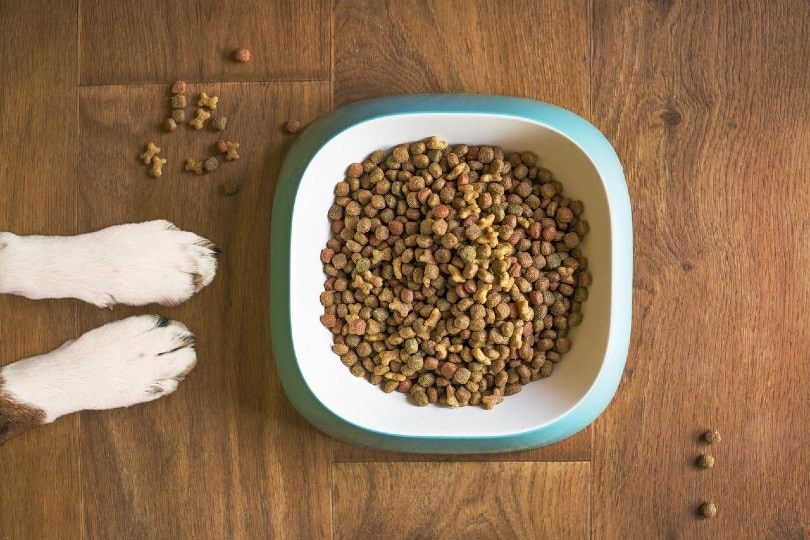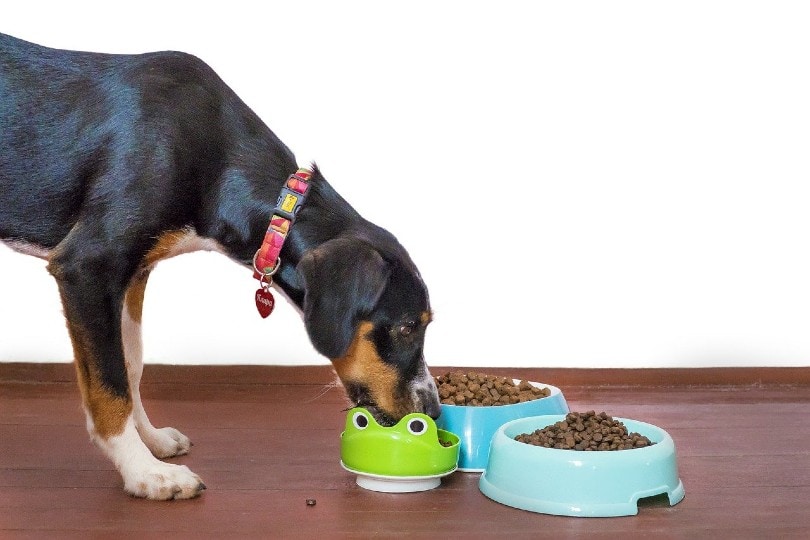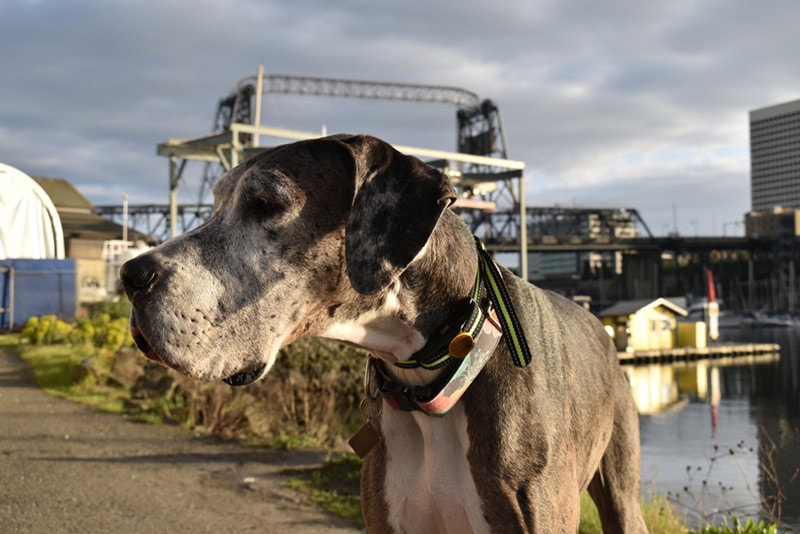How Much Does Dog Food Cost? 2024 Price Update
Updated on

Dog food can feel like a real investment sometimes, so it’s important to stay up to date on the pricing trends. Keeping yourself updated on the pricing of dog food will help you better manage your budget and help you find ways to save money on dog food. If you have dogs, this is a necessary purchase, so keeping yourself updated will help you be better prepared to plan and save.
Dog food can range from $10 to $100 per bag, depending on the size of the bag and type of dog food. Keep reading to learn more!
The Importance of Dog Food
Obviously, dogs need food to live, just like every other living thing. However, some people mistakenly believe that dog food isn’t necessary and that they can simply feed their dogs human food scraps or prepare homemade diets.
The problem with these types of diets is how complex the nutritional needs of dogs are. It can be very difficult to properly balance your dog’s diet on your own, and many people can’t afford the services of a board-certified veterinary nutritionist who can help them balance a home diet.
Commercial dog food is made to be balanced to meet the nutritional needs of dogs, and it is available in a variety of specialty options to ensure all dogs’ needs can be met.

How Much Does Dog Food Cost?
The price of dog food varies widely based on the size of your dog and the type and brand of food you’re feeding. To simplify things for you, we’re going to break down the most popular types of dog foods into categories with price ranges to help you prepare.
- Low End: These are typically the foods available in places like grocery stores as a quick grab while you’re purchasing other things. While these foods are nutritionally sound, they are more likely to be less nutrient-dense than other options. This typically means you need to feed more of it to meet your dog’s needs, and your dog is likely to produce more waste. Expect to spend around $10–$15 for a small bag of dog food and around $30–$40 for a large bag.
- Moderate: Moderately priced dog foods tend to have better nutrient density than the previous category. This means that you can usually feed a little bit less of it, and your dog will produce less waste. These foods are nutritionally sound, and many of the brands recommended by veterinarians fall into this category. Expect to spend $20–$30 for a small bag of food and $30–$60 for a large bag of food.
- High End: Things get complicated when you start looking at high end dog foods. This is because some of these products are legitimately higher in quality, while others simply use fancy marketing and buzzwords to trick consumers into paying more for the product. For example, BEG (boutique, exotic, and grain-free) diets typically fall into this category, although some BEG diets have been linked to heart disease in dogs. High end dog foods typically cost $30–$60 for a small bag of food and $60–$90 for a large bag of food. These large bags are usually smaller than the large bags offered by low end and moderate dog foods. Some higher end dog foods can cost upwards of $100–$120 per bag.
- Wet Food: Wet dog food can fall into any of the above categories. They typically range between $1–$5 per can. Most dogs need at least a can or two of wet food per day if this is their primary food source.
- Premade Raw: The easiest way to determine the price of premade raw diets is to look at the average pricing per pound. Most premade raw diets start at $2–$4 per pound. However, these foods can cost upwards of $10 per pound of food. These diets are rarely cost-effective for most people.
- Freeze-Dried: There is a decently large range of prices on freeze-dried dog foods, but most of them would fall into the high end pricing category. You can expect to spend anywhere from $20–$60 per bag of food, but oftentimes these bags are small and won’t last the average dog more than a few meals.
- Prescription: Prescription diets are diets that have been prescribed by a veterinarian to help manage a medical condition that your dog has. These diets can be quite pricey, but they are a necessity for many dogs. For a small bag of prescription dog food, expect to spend $25–$40. For a large bag, expect to spend anywhere from $40–$100 or more.
Additional Costs to Anticipate
The good news is that there are rarely additional costs associated with dog food. Prices are clearly defined, and they rarely shift more than a few dollars per product. Coupons are regularly available for a large number of brands, and stores often have sales on products. Coupons and sales can help you stock up on dog food while it’s a good price, but keep in mind that dog food will go bad if you purchase too much in advance.

How Often Should I Feed My Dog?
Dogs can be fed as little as once per day, but some people prefer to feed their dogs two or three times per day. More frequent feeding can support more satiety between meals since your dog won’t be going 24 hours without food.
The most important aspect of feeding your dog is ensuring you are feeding your dog an appropriate amount of food. Many people overfeed their dogs, leading to weight gain and medical problems like diabetes and heart disease.
The feeding suggestions on the bag of dog food are a good starting point, but you may need to adjust the amount you’re feeding based on your dog’s age, weight, and activity level. Your vet will be able to help you determine the approximate amount of food your dog needs per day.
Does Pet Insurance Cover Dog Food?
Pet insurance does not cover general dog food needs. Some pet insurance companies will help you cover prescription dog food costs, but this varies between companies. If your dog was on a prescription diet before they were insured, then it’s unlikely that your pet insurance will help you pay for this expense since it is part of a pre-existing condition.
Conclusion
While many items have gone up in price in the last few years, most dog foods have remained relatively stable in their pricing. They rarely change more than a few dollars at a time, which makes it easier to plan for the expense. If you find yourself struggling to afford dog food, check with rescues, shelters, and food banks in your area. These places may be able to give you food or help you afford food during a tough time.
Featured Image Credit: mattycoulton, Pixabay












